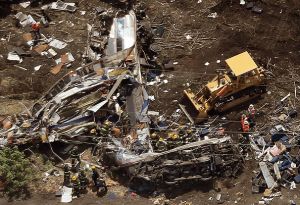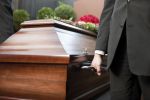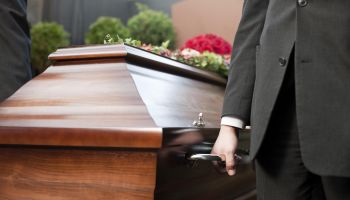
Source: Win McNamee / Getty
No one has determined what caused the catastrophic Amtrak train crash in Philadelphia, but the city’s mayor has all but indicted the train’s engineer.
Initial data showed the train was barreling into a curve at more than 100 mph before the derailment, the National Transportation Safety Board said. That’s more than twice the 50-mph speed limit for the curve.
“Clearly it was reckless in terms of the driving by the engineer. There’s no way in the world he should have been going that fast into the curve,” Mayor Michael Nutter told CNN.
NTSB board member Robert Sumwalt immediately blasted the mayor’s comments as inflammatory.
“You’re not going to hear the NTSB making comments like that,” he said. “We want to get the facts before we start making judgments.”
At least seven people were killed, and more than half of those on board were hospitalized. About a dozen passengers remain missing, The Philadelphia Inquirer reported.
While investigators continue sifting through the pieces of seven derailed train cars, Amtrak said it will have limited service Thursday in parts of the Northeast.
“Modified Amtrak service with fewer frequencies than normal will be provided between Washington and Philadelphia, Harrisburg and Philadelphia, and New York and Boston,” Amtrak said.
“There will be no Amtrak service between New York and Philadelphia, but New Jersey Transit will honor Amtrak tickets between New York City and Trenton (New Jersey).”
Here’s the latest on what we know about the crash and what investigators have to contend with:
The engineer of the Amtrak train was identified as Brandon Bostian, 32, of New York.
According to his LinkedIn profile, Bostian has been an Amtrak engineer since 2010. Before then, he was an Amtrak conductor for four years.
The engineer applied full emergency brakes “just moments” before the train derailed, Sumwalt said. The train was traveling about 106 mph as it headed into a left turn. The speed limit immediately before the curve was 80 mph.
Investigators looking at speed as factor
But even if investigators determine excessive speed caused the crash, it might not be the engineer’s fault. It’s possible there may have been a mechanical issue, such as faulty brakes.
“You have a lot of questions; we have a lot of questions,” Sumwalt said Wednesday. “We intend to answer many of those questions in the next 24 to 48 hours.”
He said his team will investigate the condition of the track and the train, how the signals operated and “human performance.”
What has the engineer said?
Bostian initially told Philadelphia police he could not recall his speed, according to a law enforcement source with knowledge of the investigation.
Detectives have since tried to interview the engineer, who was injured, and brought him in. But Bostian refused to be interviewed Wednesday and left with an attorney, a police official said.
“He remembers going through that area generally, has absolutely no recollection of the incident or anything unusual,” Goggin told ABC.
“The next thing he recalls is being thrown around, coming to finding his bag, getting his cell phone and dialing 911.”
Police were trying to get a search warrant for the engineer’s phone records so they can determine whether he was distracted at the time of the crash, the law enforcement official said.
Who are the victims?
The train was carrying 238 passengers and five crew members from Washington to New York on Tuesday evening.
“Jim was more precious to us than we can adequately express,” his family said.
Another was a U.S. Naval Academy midshipman in full uniform heading home to New York. Justin Zemser, 20, was on leave from the academy in Annapolis, Maryland.
Dr. Derrick Griffith, dean of student affairs for City University of New York Medgar Evers College, was also among the fatalities, a spokeswoman for the university said. He lived in Brooklyn.
Authorities have not ruled out the possibility of more victims at the crash site. Nutter said Wednesday that not everyone on Amtrak’s manifest had been accounted for, but he didn’t specify a number.

Source: Win McNamee / Getty
What happened during the crash?
Jeremy Wladis was in the last of the seven cars, eating, when he noticed the train starting to do “funny things. And it gradually starts getting worse and worse.”
Things started flying — phones, laptops, “then people.”
“There were two people in the luggage rack above my head. Two women, catapulted (there).”
“People started to fall on us,” she said.
“Everyone was just trying to help the people who were injured, who had blood coming out of their head, their noses, to help them sit down in the dirt away from the rails,” she said.
What were the conditions of the equipment and rail?
The locomotive was built by Siemens and delivered to Amtrak in 2014 specifically for its Northeast Corridor service, a Siemens official said. That makes it fairly new, which doesn’t rule out the train’s condition playing a role in the crash but seemingly makes it less likely.
The stretch of track where the train derailed was not equipped with an automated speed control system called positive train control, NTSB board member Sumwalt said.
In 2008, Congress ordered the nation’s railroads to adopt positive train control by December 2015 — but it’s looking increasingly unlikely that the deadline will be met.
How does positive train control work?
The derailment was Amtrak’s ninth this year, according to the Federal Railroad Administration.
While the cause has not been determined, the crash has spurred discussion about the nation’s aging rail infrastructure.
Transportation analyst Matthew L. Wald said the area where the train derailed has had problems.
“It’s an extremely heavily used stretch of track,” he said. “They have trouble keeping it in a state of good repair.”
Source: CNN.com















